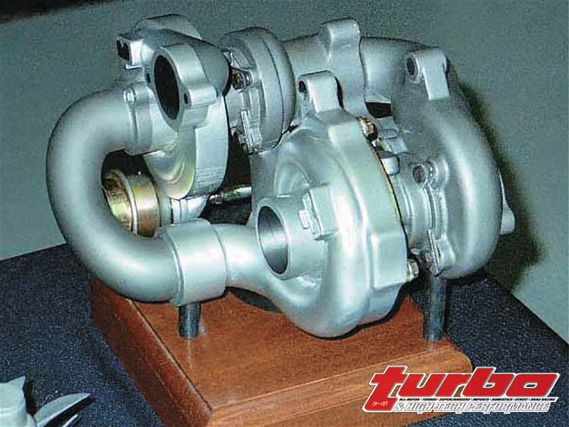 | Future turbo system? Borg-Warner's integral compound turbo uses two small turbochargers "siamesed" into one package. The turbo system makes early boost, yet is capable of very high compound pressure ratios.
| Future turbo system? Borg-Warner's integral compound turbo uses two small turbochargers "siamesed" into one package. The turbo system makes early boost, yet is capable of very high compound pressure ratios. Running Multiple Compressors In A Forced-Induction Application Is Not Uncommon. Multiple Symmetrical Turbos Can Be An Option On Really Big Engines, When One Turbo Just Won't Pump Enough Air.
On V-configuration engines, it's the only way to get a turbine housing in close proximity to both exhaust manifolds. On any engine where response is critical and two small turbo rotating assemblies can be made to spool faster due to the reduced inertia, this concept is viable.
Multiple Sequential Turbos? Harness all the exhaust energy to actuate a single turbo for excellent low-end response, then open some valves and bring a second turbo online when the engine's air-flow requirements begin to exceed the capacity of the first turbo.
Staged Turbos? This method is great for super-high boost applications (50 psi) where the required pressure ratio for a single compressor would be too high for reasonable thermal efficiency. With compound turbocharging, you step up the air pressure a reasonable amount (say, pressure ratio of 1.5 to 2.0) with the Stage 1 turbocharger, then intercool it. Then feed the Stage 1 pressurized charge air into a second Stage 2 turbo to pump up the boost to extreme levels with another reasonable pressure ratio (followed by a second stage of intercooling).
